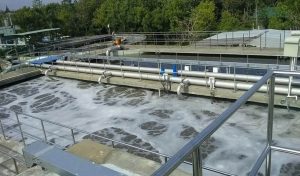The safe storage of grain has always been difficult in many countries. The strong oxidation of ozone allows it to play an important role in grain storage. Ozone can act both as a pesticide and a fumigant in grain treatment, which can effectively extend the shelf life of grain and restore damaged grain. More importantly, ozone treatment for grain storage is an organic and chemical-free treatment method compared with the use of synthetic chemical insecticide products.
The advantage of ozone in grain treatment is that the process will not damage the grain and the operation is easy. Next, let’s look at what ozone can do in grain treatment.

1. Pest Control in Grain
Ozone as a fumigant can keep various pests away from grain. The application has previously been limited by a number of uncertainties. Now, with further research, this practice has gradually been verified. Ozone at a concentration of 0.1 ppm can repel a variety of pests from the grain. Moreover, periodic use of ozone treatment for pest control in grain can inhibit the growth of pests until they are extinct. Also, ozone has a very short half-life, which can not only achieve the pest control purpose, but also avoid any secondary pollution to food.
2. Ozone for Mold Removal in Grains
If not carefully handled, grains will easily be affected by moisture and mold growth during storage. Mold has an irreversible effect on grains. Just as ozone that can be used in many industries for mold and odor removal, it can also be used in grain storage. The application of ozone can effectively reduce the growth and spreading of mold spores in grain. Even for grain that has already been affected by mold, it can be treated with ozone for a better sale in the future.
3. Reduce and Control Mycotoxin in Grains
Mycotoxin commonly exists in the process of grain storage. Mycotoxin can build up in the fields even before the crop is harvested, and is most common in corn during the wet season. Corn with a higher mycotoxin level cannot be used for human or animal consumption, which will greatly reduce its market value. Ozone can effectively oxidize and decompose mycotoxin in crops such as corn. Ozone can also prevent its levels from rebounding when it is low. Ozone can effectively ensure that the mycotoxin existence in grains is always at a safe level.

Operation
Ozone used for grain treatment is produced by an ozone generation system. The basic process and operation of grain treatment with ozone are as follows:
First, natural air will pass through a Filter into the Air Compressor for compression. The compressed air is then passed through an Air Dryer to remove the moisture within. This can prevent an oxygen concentrator in the following from any damage by the moisture. The compressed air will then go to the oxygen concentrator, in which nitrogen will be removed from the compressed air and pure oxygen at about 93% will be produced. Next, the oxygen will go to an ozone generator, in which about 10% of the oxygen will be converted into ozone. The ozone generator is usually equipped with a Water Chiller to ensure that its temperature will not go too high during its operation process. This will ensure a stable supply of ozone. Ozone will then be piped into the grain bin. Fans around the bottom of the bin will blow air into the grain bin to mix the air with ozone. Ozone diluted by natural air will go up from the bottom of the bin and evenly pass through the grain. Ozone that has penetrated the grain and arrived at the top will safely exit from the top of the grain bin.
Depending on the scale of the grain bin, the thorough ozone treatment process can take days or even weeks. Ozone generating equipment can also be mounted on a trailer for mobile operation demands. In the process of grain treatment, several ozone detectors can be placed in different locations within the grain bin to measure the concentration of ozone. Ozone detectors can also be used to ensure that ozone has passed through the bin when the treatment is completed. It can also verify the effectiveness of the ozone treatment system.




